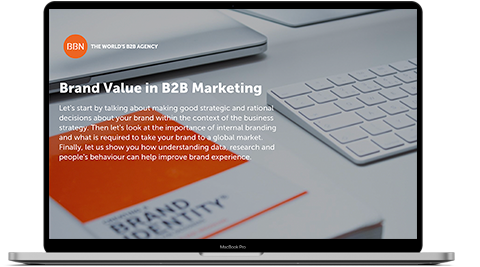For this article, the fifth in a series of six, we’ve again combined the advice of savvy global experts to provide you with a range of opinions and advice. We hope their insights will bring you inspiration and new perspectives on how to improve your global marketing efforts. Most of our interviewees come from large, global companies, so how they do things could be challenging for a smaller organisation with fewer resources. The central theme from our experts is ensuring you have marketing expertise that is geographically close to your target customers; this concept is universally applicable. You may have to be creative in how you implement it if you don’t have the internal resources.
Hub and Spoke
The balancing act between maintaining consistent brand expression while achieving local relevance emerges again as we look at marketing organisational structure. Our experts were unified when it came to the application of a ‘hub and spoke’ model, with varying degrees of responsibility and freedom given to local resources.
Thomas Heide Jorgenson, head of marketing communication at Danfoss, deploys regional marketing teams for maximum efficiency. “Previously, marketing was run locally by a few marketing resources who managed many aspects, including media. But too many competencies are needed to run effective programs at this level, so our model is now regional where we can have a stronger cross-section of functional experience within our teams.” He went on to explain that the global marketing team has defined a clear value proposition for what they offer to the regional teams, including service level agreements to local teams.
Gilbarco Veeder-Root‘s ‘hub and spoke’ approach is built around a shared services model. “Our optimal model for marketing globally is to have the brand centralised in one group and to use a consolidated shared services model for functions that aren’t impacted by regional and local differences, like data management, CRM, marketing automation and basic asset creation. But creative and content are done regionally, decentralised to the experts who can account for offering differences and cultural nuances,” stated Monica Arroyave, senior director of consumer solutions.
Klaus Sejr Madsen, international marketing director, Brüel & Kjær, HBK, shared his marketing team model, which smartly divides responsibilities. “We have a centralised brand and campaign development team that develops content and digital execution for larger campaigns and initiatives. This includes channel selection and reporting, with input from local teams. Our local field marketing teams support local sales initiatives, events, execution and social media campaigns. They are vital to our effectiveness locally.”
See Also: The Marketing Globetrotter: Creative that can go the distance
Co-creation: There’s That Word Again
Although developing the brand and strategies for campaigns from a centralised group makes sense, it can’t be done in a vacuum. If you’ve ever worked in an organisation where the corporate marketing group feels disconnected from regional and local teams, you’ve probably witnessed how a brand can be misinterpreted (and even mistreated) in some cases. That’s because the local teams aren’t bought into the corporate team’s wishes.
But it’s an issue our B2B experts have figured out.
Jorgenson explained: “Our global marketing team works in close partnership with the local teams to get their input on programs up-front. We know they play an important role in being closer to the customers. This allows us to collectively set clear goals and expectations for local markets and also make sure we have the resources to execute the campaigns.”
Jessica Svahn, global brand manager at AAK, is also committed to the full involvement of all marketing team members. “Even in our somewhat decentralised organisation, we have managed to secure great buy-in to our brand and the key messages we want to communicate. This buy-in results from a bottom-up process that ensures everyone is heard and ultimately onboard.”
Scheduled Interactions Keep Connections
If you want to keep centralised brand and strategy teams connected and working effectively with regional and local teams, make it part of your meeting cycles and budget. Svahn noted that their global teams connect at five annual meetings where they discuss branding and marketing challenges, mostly face-to-face. This allows them to share experiences and optimise common efforts effectively.
Adam Sidders, marketing communications director for Cummins, noted that for a recent global product launch, they flew in marketing team members and a cross-section of other go-to-market stakeholders from every corner of the world. Everyone had a say in the best approaches to the launch. In his words: “There were no holes in our product and the launch because everyone’s opinions were considered. The output was stunning.”
No Overnight Miracles
Every company is at different points in their marketing maturity as it relates to being locally relevant in their global efforts. Achieving buy-in from executives — especially for the headcount and other resources required to make this happen — is a process. And even when the structure is in place, the journey to full efficacy is difficult. Jorgenson sums it up best.
“Have respect for the distance from global to local marketing. It’s a long and delicate process, which needs a lot of attention.”
But a worthwhile one, we think.







